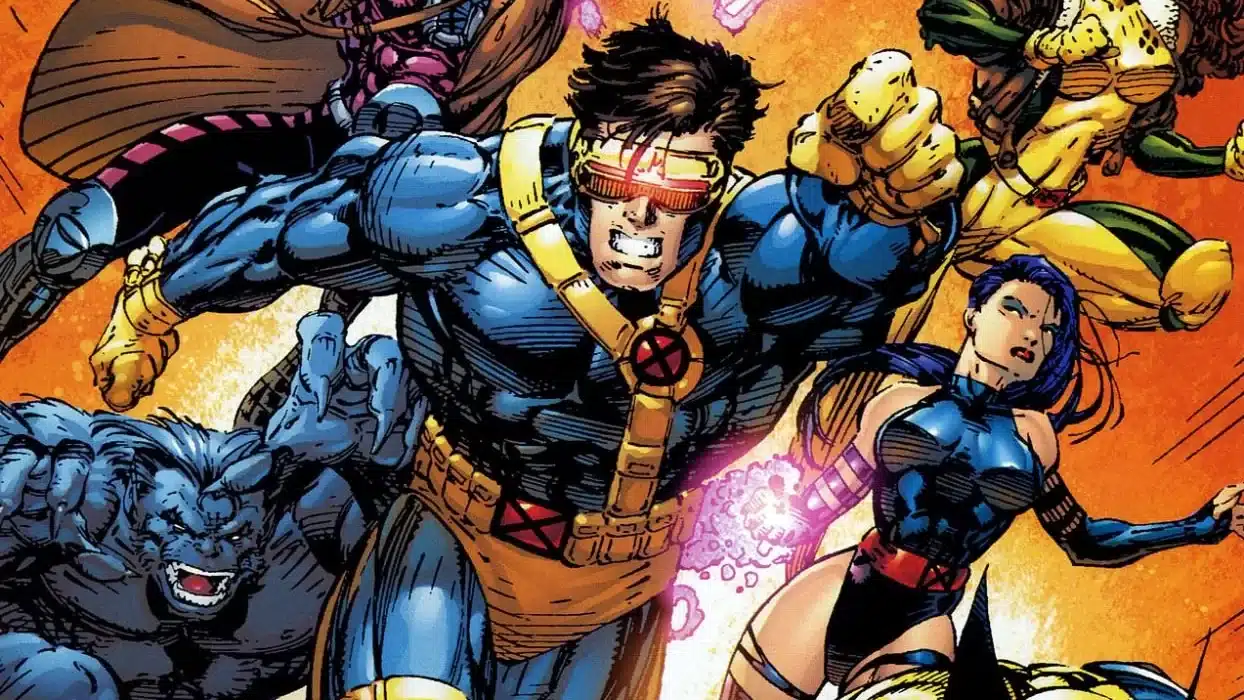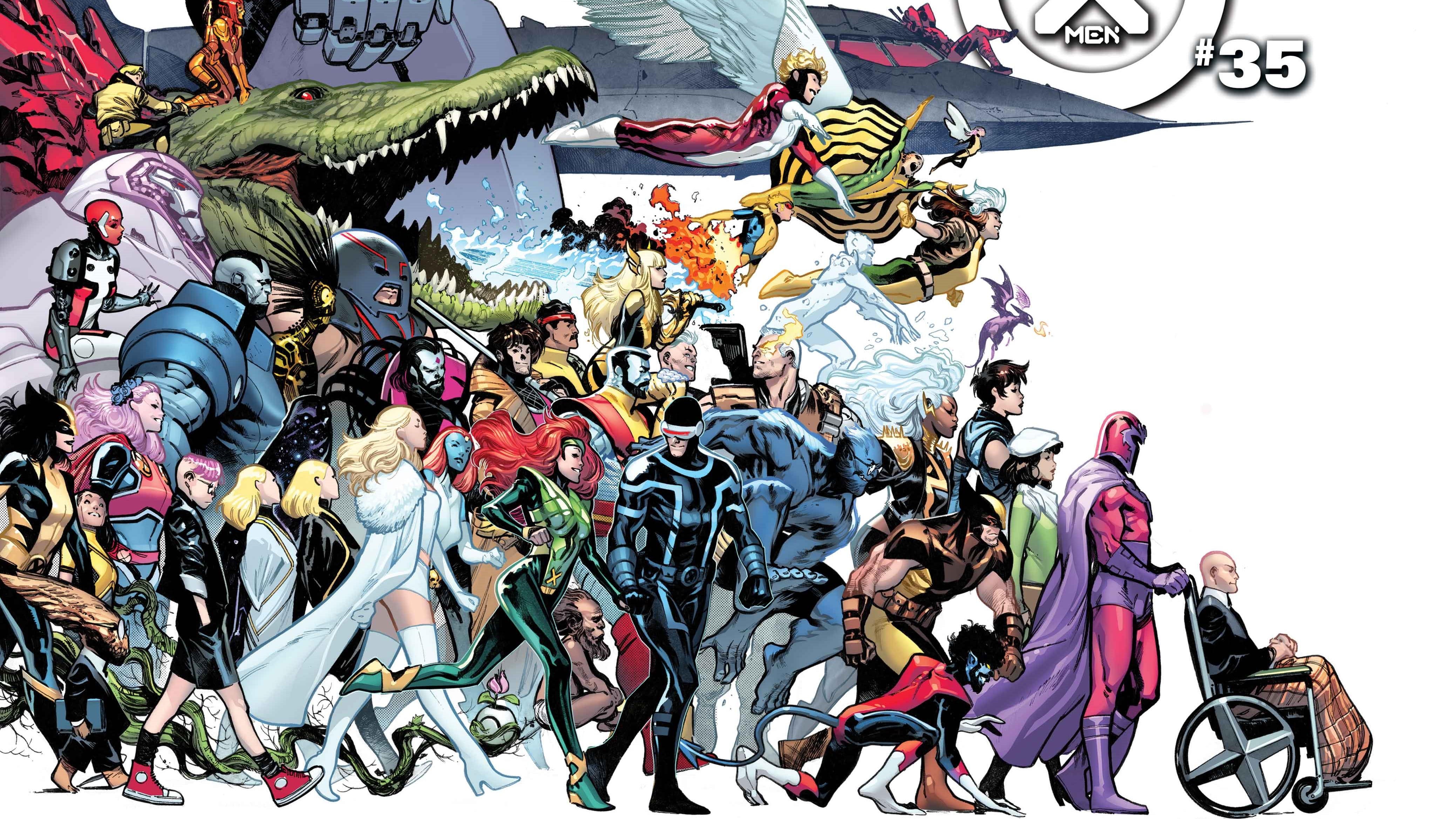Art by John Cassady
Like many others, I’m a fan of superhero comics – and I use the term in its literal sense, as a shortening of ‘fanatic’. You see, my love of comics, especially superheroes, has moved from hobby to obsession – and there’s only one group that can match the warm glow of a 20mg oxycontin – and that’s the X-Men.
Fans of a certain age have undoubtedly been introduced to Storm, Beast, Cyclops et al in the same way as I – through the medium of cartoon. Growing up in a small Irish town I had naively assumed that like six-packs and millionaires, comic books were something that only happened in America – that’s why I’ll never forget that fateful day in June 1999, when I found my first X-Men comic.
In a gas station, I find a copy of Essential X-Men, issue 48 – and no, not those black and white tomes of reprints – these are comics with card covers and high-quality paper – they also reprint 4 stories an issue for £2.25, which works out at approximately $3. But despite being a better bargain than the direct editions, they are (or were) three years behind the States in terms of stories.

Art by John Burns
So while the threat of Onslaught had passed some three years prior, to me the saga was only just beginning – and it was with this story that we can see the slow trend towards the X-Men’s wider participation in the Marvel Universe.
If there’s one go-to phrase used to describe the X-Men it is this, mutant soap opera. But why soap opera? The X-Men are superheroes just like the Avengers, and no one calls the Avengers a soap opera! Well, a soap opera isn’t inherently a bad thing, it just has particular components that permeate the stories, most notably
• Open-ended narratives
• A focus on dramatic relationships between characters
Grant Morrison’s New X-Men along with Chris Claremont’s X-Treme X-Men are both perfect examples of the mutant soap opera – stories with action and adventure, but with character-driven subplots that you just don’t get in the likes of the Avengers, or even the Fantastic Four. e.g. adultery, addiction, subversion.

Art by Frank Quitely
Taking our first point, we can sum up the open-ended narrative of the X-Men with the ever familiar ‘protection of a world that hates and fears them’. The ‘hates and fears them’ bit is the important part – it’s what makes the X-Men, The X-Men, and it’s also what keeps their story going.
We know the X-Men are outcasts; made different from their human counterparts by a genetic mutation, one which grants them awesome abilities and minority status. They fight for inclusion and acceptance in a world which would rather see them burn. It is their minority status that makes them an analogy for real world issues, most predominantly discrimination. You can find comparisons of Professor X and Magneto to MLK Jr. and Malcolm X, while the movies make no secret in using mutants as a stand-in for gay and lesbians.
The driving force behind the X-Men is acceptance – they must fight for their place in the world, but should they ever win the fight, the X-Men will have nowhere to go, dramatically speaking. Like other mainstream comics, they are not allowed to reach their third act, they must constantly exist in a state of conflict and so, for every step forward, we must go back another two. As the curtain falls on the second act, it opens on a stage with only minor modifications to the lighting and set pieces.
The only thing that changes is the nature of the conflict.
Take the Avengers, they are superheroes first and foremost; defending the Earth against threats no single hero possibly could. These stories are propelled by action and driven by plot. For our beloved mutants, this isn’t so. To illustrate this point a little better, let’s take a look at some of the villains the X-Men regularly face.
Mystique – this shape-shifter has ties to Destiny, Rogue, Nightcrawler, Sabretooth and Graydon Creed. She’s worked alongside Magneto, who has had relationships with Rogue, and also happens to be Charles Xavier’s oldest friend and deadliest enemy, reluctant teammate, and covert anti-hero. While Sabretooth is not only Mystique’s partner-in-crime and sometime aide of Magneto, but also Wolverine’s oldest enemy.
Mr. Sinister exists solely to torment Scott Summers & Jean Grey. Darkchylde, Illyana Rasputin the tormented sister of Colossus, and the clones of Jean Grey. Not to mention Cassandra Nova.
From the small fraction of the X-Men’s villainous ensemble, we can easily see how the drama between characters can propel these stories forward in a way that just isn’t true for the Avengers. Yes, arguably there is something similar in terms of relationship dynamics in the Avengers, but the closest we get to this is Simon Williams and the Grim Reaper, or Hank Pym, Ultron, and Wasp. The Avengers are accepted and worshipped as heroes – if there were no threats to Earth, they would not exist as a team – their fight is defensive and reactionary. The X-Men must fight daily for acceptance in their world while defending it from threats that may arise.
While the X-Men have faced extinction level events before – they were extinction level events for the entire planet. When Magneto was going to flip the magnetic poles, it wasn’t just mutants that would be killed, a world where only the strong survive? Not a mutant-only threat. The extinction of mutants-only is a much more recent phenomenon.
Following on from Joss Whedon’s Astonishing X-Men we start to see a shift from a character-driven story to an action driven story. In order to keep things fresh and new, we must restructure the world in which the X-Men live. Over the course of the coming years, the X-Men would move from Westchester, New York, to San Francisco, while the next species-only threat emerges as the Scarlet Witch decimates the mutant population, and ends new mutant births with a whisper. If you look at the ever-growing list of mutant characters, it could be argued that a cull was needed – and No More Mutants was the quickest, and cleanest, way to do it. And if you’re going to go to all that effort of cleaning house, you might want to set some new rules so we don’t end up in the same place a few years down the line – hence no more mutant characters to be created.

Art by Oliver Coipel
But of course, this is the world of comics, and thus it is subject to change at editorial whim – a few years later, readers and the X-Men are given a small sliver of, well, Hope – a mutant messiah signalling the arrival of new mutant births around the globe.
While these stories are taking place over the course of several years, the X-Men’s interactions with the wider Marvel Universe are also growing. Wolverine joins the New Avengers, followed by Storm joining the Avengers. But it’s not just the Avengers ranks swelling, Namor joins the X-Men, who get involved with Blade, and have an adventure with the Future Foundation. The Trial of Jean Grey and Original Sin sees more and more interaction with teams and characters we would never have imagined, not to mention the Black Vortex crossover.
Eventually things come ahead when the Phoenix Force arrives in the form of Avengers Vs X-Men – which itself ended with the birth of a new team, The Uncanny Avengers – a squad comprised of both X-Men and Avengers – an idea which now seems so simple – but imagine an Avengers team full of X-Men in the 90s, and you’d be laughed at.
No longer was the only crossover character Beast on the Avengers or Carol Danvers on the X-Men, we have an entire squad dedicated to bringing the Marvel Universe together.
The question is, how long will it last?
Whether you believe the conspiracy theories or not, the Inhumans are playing a larger role in the Marvel Universe – but this is to be expected when you announce a movie based on a franchise.
While in our world the Inhuman movie has been dropped from the schedule, on paper there is a swirling gas of global proportions giving new life to the Inhumans, all the while killing off our favourite gene-freaks.
This species-specific threat is unique, not only does it threaten to eradicate mutants, but it will replace them with Inhumans if left unchecked.
But what are the chances the X-Men will disappear from those monthly solicitations? Well, let’s me honest, if we look at it rationally, it’s quite slim.
The X-Men will survive, they always do.
After all, miracles are their stock-in-trade.
Graeme Carson is somewhere between wanting to be a writer and wanting to finish his psychology degree. You can follow him on Twitter, or if you’re into infrequently updated comics, Tumblr.
Zachary Jenkins runs ComicsXF and is a co-host on the podcast “Battle of the Atom.” Shocking everyone, he has a full and vibrant life outside of all this.






